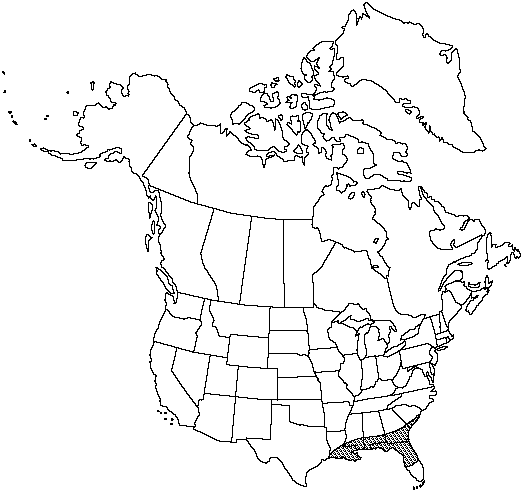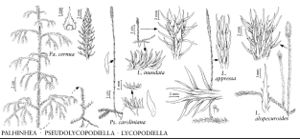Palhinhaea cernua
Bol. Soc. Brot. ser. 2, 41: 25. 1967.
Roots clustered at soil contacts of horizontal stem, 5–30 × 0.4–0.6 cm. Horizontal stems with leaves remote, linear-needlelike, recurved at base, upcurved at apex, 2.9–3.1 × 0.1–0.15 mm. Upright shoots to 45 × 3.5 mm, gradually diminishing and branched successively 3 times, 3–12 cm from base to form complex treelike habit. Lateral branchlets spreading-ascending, drooping at tips, 0.2–0.4 mm wide, leaves needlelike, recurved basally, upcurved apically, 2–2.5 × 0.1–0.2 mm, leaves and stems sometimes hairy near strobili. Strobili nodding at 60–80° to subtending vegetative branch, 0.4–0.8 × 0.15–0.2 cm. Sporophylls trowel-shaped, 1.5–2 × 0.7–0.8 mm, margins fringed, teeth to 0.2 mm, mostly branched.
Habitat: Wet depressions and ditches in pinelands, road banks
Elevation: 0–100 m
Distribution

Ala., Fla., Ga., La., Miss., S.C.
Discussion
Palhinhaea cernua is a showy plant. This is probably the world's most abundant club-moss. The species overwinters as buried stem tips, the rest of the plant dying.
Selected References
None.
